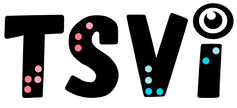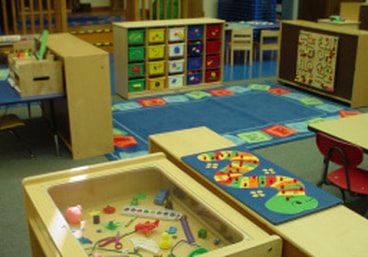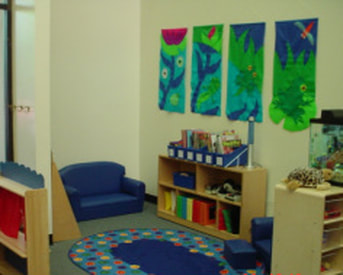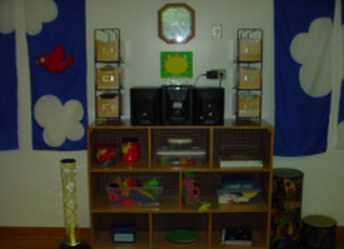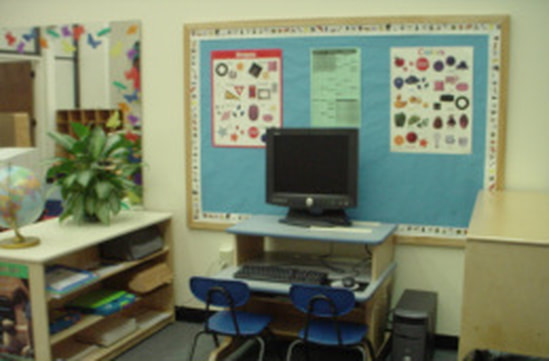- Home
-
Learn
- History of VI >
- Legislation & Laws >
- Vision Professionals >
-
VI Program Resources
>
- Program Printables
- Itinerant Teaching Tips
- Year at a Glance
- VI Program Handbook
- Caseload Analysis
- Organization & Time Management
- Professional Development
- Teacher Standards
- Professional Ethics
- Awards & Recognition
- APH Scholar Program
- Professional Organizations
- Certification Organizations
- Dealing with Challenges
- Professional Publications >
- Relatable Books for All Ages >
- Family Resources >
- Plan
- Basics
-
Teach
- Teaching Strategies >
-
Compensatory Skills Instruction
>
-
Social Skills
>
-
Self Determination
>
- Body Image & Acceptance
- Making Personal Goals
- My Vision Presentation
- My Self-Description
- Create a Personal Data Sheet
- Disclosure Decision
- Disability Statement
- Requesting Help
- Fighting Fears
- My Circle of Support
- Personal Responsibility
- Advocate for Safe Enviroments
- Having Picture Taken
- Coping with Change
- Aging Eyes
- Physical Characteristics
- Political Activism
- Laws Regarding Persons with Disabilities
-
Sensory Efficiency
>
-
Independent Living
>
- Orientation & Mobility Instruction >
- Recreation & Leisure >
-
Career & Vocation
>
-
Grow
- Complete Set Bonus >
-
Recorded Presentations
>
- Webinar: Tips for Being a "Physically Fit" TVI
- Webinar: The Art of Teaching the ECC
- Webinar: Virtual & F2F Strategies
- Webinar: Foundations of Teaching the ECC in the Age of Virtual Instruction
- Webinar: Itinerant Teaching Strategies
- Webinar: Using Themes to Teach the ECC
- Webinar: Conducting a FVLMA
- Webinar: Selecting the Right AT
- Webinar: Developing SMARTER Goals
- Webinar: Determining Service Intensity Using the VISSIT
- Webinar: Activities to Teach the ECC
- Webinar: Accessible Content for BLVI
- Webinar: Accommodations for VI
- Webinar: MIMO Strategies & Activities
- Webinar: SIDPID Strategies & Activities
- Webinar: Standard Course of Study Strategies & Activities
- Webinar: Job Tasks for Job, Career & Life
- Shop
- Jobs
Classroom Design TipsBy: Carmen Willings
teachingvisuallyimpaired.com Updated February 26, 2016 There are some considerations that you should make when arranging the classroom to accommodate for a student who is blind or visually impaired. You should not be afraid to rearrange the classroom for the purpose of improving the environment. Try to avoid changing it too frequently and keep in mind that when you do rearrange the environment, you will need to orient the student to the room. It can be a challenge to arrange seating in the classroom to foster friendships particularly when the student needs to be positioned in certain locations in the room to allow for lighting, proximity and access to outlets. Efforts should still be made to place the student with other students, especially if other students in the classroom are positioned in clusters.
An organized classroom reduces visual clutter, promotes independence in navigation, and helps the student independently locate and clean up materials. The design of the classroom can also be viewed as a tool to modify behaviors. The next step is to help the student “learn to look” by respecting where and how the student sees the best (if the student has any usable vision), and then control the environmental conditions such as lighting, color, placement, spacing, contrast, size, detail, etc. This will help ensure that the student has adaptations necessary to be successful and as independent as possible. 1. The first step in arranging the classroom is sketch the classroom and include features that can't be moved (windows, doors, built in cabinets, built in counters, etc.). Also draw "x's" to indicate where outlets and computer/phone modems are located. This will generally dictate where the teacher's desk and any other electrical equipment will be located.
2. It is essential to have a well-organized classroom that is free of visual and physical clutter. As a rule, avoid excessive furniture, materials and equipment, but don’t go to the extreme of having your room resemble an institution. Be sure that the activity areas are well-defined. Obviously a preschool classroom will have different needs from a multiple disability and from that of 4th grade room or high school classroom. Consider the needs of your class and plan accordingly. 3. Arrange the furniture to provide clear traffic paths and that these routes or pathways are safe and accessible to help develop orientation and mobility skills for students that are mobile. It is also important to allow enough space for any wheelchairs, standers and other specialized equipment to be moved. Position furniture in such a way that it enhances their freedom of movement. 4. Be sure you do not stack shelves and containers higher than shoulder height. This not only obscures the view of the classroom and creates a maze effect, but it is also a safety hazard if the shelves and containers are not secured.
5. Have materials in a consistent location. This will not only make the materials accessible to the student, but will also help you and other team members locate needed materials. Refer to Labeling System for suggestions on labeling the materials to make them easy to find and to promote literacy. 6. For students with low vision, provide good contrast in furnishings, walls, and floors. Sometimes this cannot be controlled due to availability, but keep in mind that a visually cluttered carpet can pose safety risks if toys are left out on the carpet and can't be readily seen by a student with low vision. 7. Be aware of surface changes (wood, carpet, tile, etc) and highlight edges if there is not a good contrast. There are a number of ways to do this that are permanent or temporary. Placing Duct Tape along the edge is a temporary way to highlight edges. Duct Tape is now available in a variety of colors and prints. Select a color that provides good contrast and avoid the patterned tapes. A permanent solution is to paint the edges or apply rubber grips to the edges of steps. A contrasting color of tape can be placed around the perimeter of tables and cabinets if you find the student frequently bumping into corners. You may also need to use color or contrast to outline steps, outlets, and switches. 8. For students with little or no functional vision, using different floor textures (differentiating between tile and carpeted areas) may be helpful to provide the student with extra tactual clues.
9. It is important to provide a good trailing surface if the student is mobile. This allows a student to feel along the edge of a cabinet or table to help them move throughout the room.
10. Tack or tape down scatter rugs or runners as well as any electrical cords. 11. Create landmarks to help students develop orientation and mobility skills. Carefully chosen sound, textured, scented (but only if it is a constant scent) or highly visible clues can help a student who has impaired vision to move around the classroom more confidently. 12. Encourage independence and orientation skills by placing student’s cubby or locker on the end or near a good landmark. 13. Teach all students to push their chairs under the table or desk when they get up; close or open doors fully; and pick up materials when they are done. Seating Placement
Classroom Zoning
Preschool classrooms and those for students of multiple disabilities will have multiple adults to work with the students. Create a “zoning chart” along with variations to the chart that accommodate for changes in the schedule along with plans for substitutes. A zoning chart makes it clear where all adults are expected to be during all activities including routines and transitions. This eliminates any questions of who is responsible for each area or student. Remember that unexpected circumstances may arise and flexibility is important. It is important to learn to work as a team and to balance each other out. |
History of vi
Visual Impairments
Vi organizations & Agencies
VI book resources
VI Professionals
Professionalism
Instructional Planning
Professional Publications
Educational Programming
Individual Learning Differences
referrals
Medical vision exams
fvlma
additional evaluations
service planning
writing goals
compensatory skills
Guiding Principles Functional Skills Community Based Experiences Concepts to Teach Access to Instruction Organization & Study Skills Time Management Virtual Instruction Movies & Assemblies Lectures & Instruction Board Work (Chalk, White, etc.) Daily Schedule Morning Meeting Weather Check Dramatic Play Blocks Numbers & Counting Cranmer Abacus Instruction Algebra Geometry & Spatial Sense Measurement & Data Early Literacy Experiences Create Tactual Books Reading Instruction Reading Efficiency Science Adaptations Social Studies Adaptations Communication Modes Accessible Educational Materials Individual Schedules & Communication Cards Adjust Lighting Large Print Optical Devices for Near Optical Devices for Distance Optical Device Use Photocopying Font Legibility Increase Contrast Pictures & Worksheets Keyboarding Instruction Word Processing and Shortcuts Navigate Computer w/o a Mouse Braille Code Braille Instruction Braille Instruction Materials Writing Braille Summer Reading (braille) Signature & Handwriting Nemeth Braille Code Tactile Graphics Guidelines Creating Tactile Graphics Tactile Graphics Instruction Teacher Made Materials Labeling System assistive technology
Overview of Assistive Technology VI AT Resources Non-Optical Low Vision Devices Video Magnifiers Video Magnifier Instruction Screen Enlargement & Readers Low/Med. Tech Tactual Devices Notetaker Instruction Braillewriter Repair Tactile Graphics Technology Braille Technology Auditory Access Devices Accessing Audio Books iPads as Instructional Tools Making iOS Device Accessible iOS Accessibility Resources VoiceOver Apps for VI Note Taking apps Apps for Accessing Books Identification Apps Navigation & Location Apps Braille Apps Magnifier Apps Sound Making Apps Cause & Effect Apps Vision Skills Apps Apps for Early Learning Read to Me Story Apps Apps for Communication Android Apps for VI sensory efficiency
Sensory Input Encourage Use of Vision Sensory Area & Rooms Lightbox Use Sensory Activities for Students with Multiple Disabilities Sensory Tables Visual Efficiency Skills Visual Attend and Scan Activities Visual Tracking Activities Visual Discrimination Activities Visual Motor Activities Tactual Readiness Developing Skillful Hands Auditory Readiness Listening Skill Instruction independent living
orientation & Mobility
career education
recreation & Leisure
self determination
|
|
Teaching Students with Visual Impairments LLC
All Rights Reserved |
- Home
-
Learn
- History of VI >
- Legislation & Laws >
- Vision Professionals >
-
VI Program Resources
>
- Program Printables
- Itinerant Teaching Tips
- Year at a Glance
- VI Program Handbook
- Caseload Analysis
- Organization & Time Management
- Professional Development
- Teacher Standards
- Professional Ethics
- Awards & Recognition
- APH Scholar Program
- Professional Organizations
- Certification Organizations
- Dealing with Challenges
- Professional Publications >
- Relatable Books for All Ages >
- Family Resources >
- Plan
- Basics
-
Teach
- Teaching Strategies >
-
Compensatory Skills Instruction
>
-
Social Skills
>
-
Self Determination
>
- Body Image & Acceptance
- Making Personal Goals
- My Vision Presentation
- My Self-Description
- Create a Personal Data Sheet
- Disclosure Decision
- Disability Statement
- Requesting Help
- Fighting Fears
- My Circle of Support
- Personal Responsibility
- Advocate for Safe Enviroments
- Having Picture Taken
- Coping with Change
- Aging Eyes
- Physical Characteristics
- Political Activism
- Laws Regarding Persons with Disabilities
-
Sensory Efficiency
>
-
Independent Living
>
- Orientation & Mobility Instruction >
- Recreation & Leisure >
-
Career & Vocation
>
-
Grow
- Complete Set Bonus >
-
Recorded Presentations
>
- Webinar: Tips for Being a "Physically Fit" TVI
- Webinar: The Art of Teaching the ECC
- Webinar: Virtual & F2F Strategies
- Webinar: Foundations of Teaching the ECC in the Age of Virtual Instruction
- Webinar: Itinerant Teaching Strategies
- Webinar: Using Themes to Teach the ECC
- Webinar: Conducting a FVLMA
- Webinar: Selecting the Right AT
- Webinar: Developing SMARTER Goals
- Webinar: Determining Service Intensity Using the VISSIT
- Webinar: Activities to Teach the ECC
- Webinar: Accessible Content for BLVI
- Webinar: Accommodations for VI
- Webinar: MIMO Strategies & Activities
- Webinar: SIDPID Strategies & Activities
- Webinar: Standard Course of Study Strategies & Activities
- Webinar: Job Tasks for Job, Career & Life
- Shop
- Jobs
